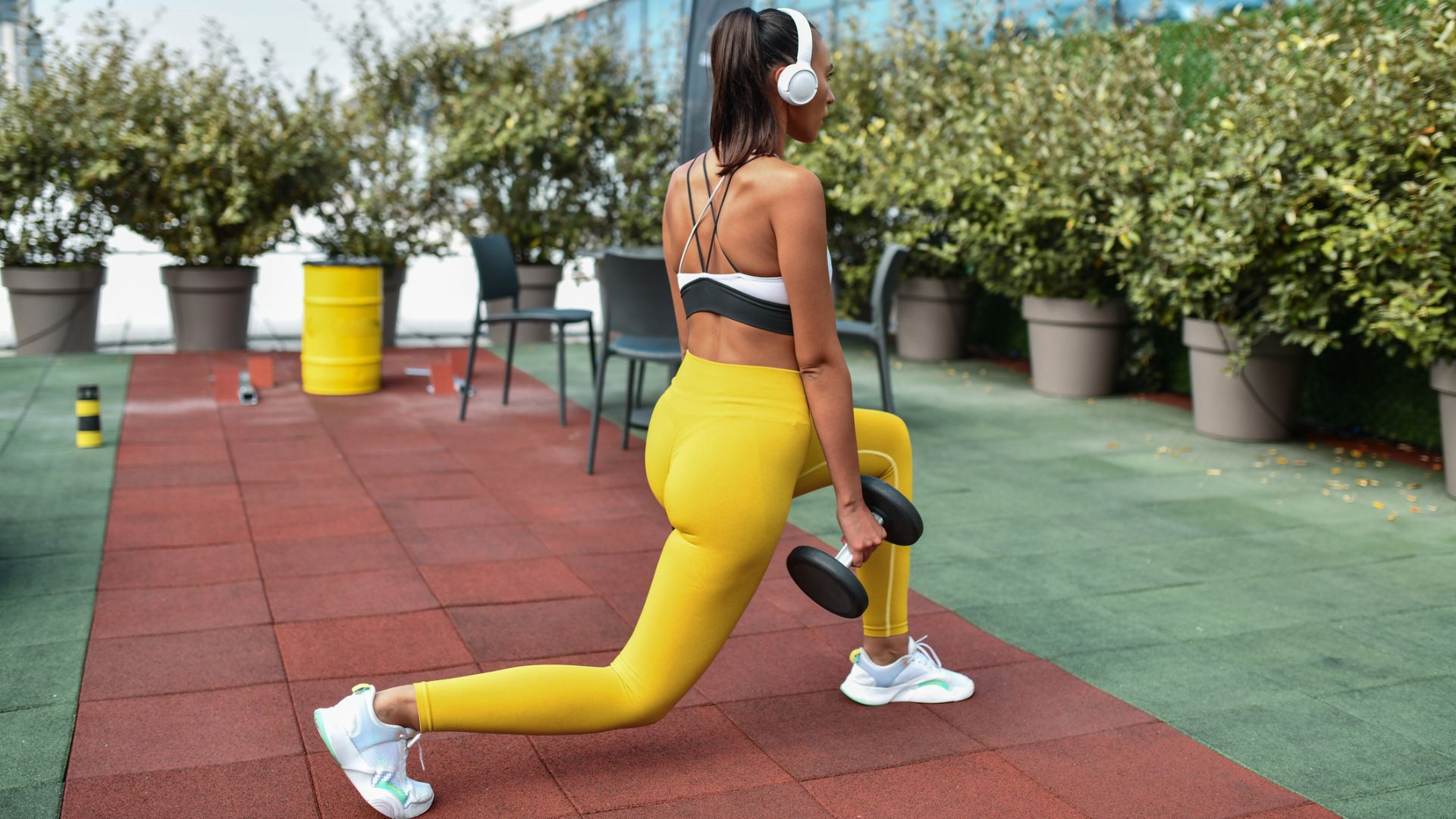Five moves and two dumbbells are all you need to build stronger legs
Strengthen your legs and glutes at home while building a balanced body with this dumbbell workout


A busy gym can be tricky to navigate, with huge queues for equipment and an overflowing weights section. Luckily, we've found a great leg and glute workout that only uses two dumbbells, so you can pick up a pair, find a quiet corner and start squatting.
Or, if you want to swerve the gym altogether, you can always save yourself a commute by doing it at home (just use a chair or other elevated surface in place of a weight bench for the split squat jumps).
The session has been devised by Evolve You training app co-founder Krissy Cela to strengthen your lower body with just five muscle-building moves. Although you can do it with any fixed-weight dumbbells, we recommend keeping a set of adjustable dumbbells handy so you can quickly change the load between exercises.
To try it for yourself, complete the prescribed number of sets and repetitions for each movement (listed in Cela's caption below) before progressing to the next exercise.
Watch her videos below to find out more about the five exercises she's selected, and pay close attention to Cela's form to help you learn the correct technique for each one.
Watch Krissy Cela's dumbbell leg workout
A post shared by Krissy Cela (@krissycela)
A photo posted by on
As this is a resistance training workout, with a focus on increasing the strength and size of your muscles, you should rest for 60-90 seconds between each set.
If you're used to high-intensity HIIT workouts, this may seem like a long time, but it will allow your muscles to recover slightly so you can continue to lift a weight you find challenging (an example of the progressive overload principle in action).
Start your week with achievable workout ideas, health tips and wellbeing advice in your inbox.
All of the movements included in Cela's session are compound exercises, meaning they work more than one muscle at the same time. For example, the time under tension sumo squats will hit your glutes, quads, hamstrings, calves, and core. This makes them a top tool for time-efficient training and comprehensive gains.
She also uses many unilateral (or single-sided) movements, which are a great way to remedy any muscular imbalances your body may have by focusing on one side at a time.
The day after completing this workout, you're going to want to allow your lower body to recover, so consider focusing on other muscle groups with this eight-move arm workout or a 20-minute upper-body session.
You can also forego the weights entirely in favor of a lower-intensity activity such as flowing between these anti-aging yoga moves or starting our Pilates plan for beginners.

Harry Bullmore is a Fitness Writer for Fit&Well and its sister site Coach, covering accessible home workouts, strength training session, and yoga routines. He joined the team from Hearst, where he reviewed products for Men's Health, Women's Health, and Runner's World. He is passionate about the physical and mental benefits of exercise, and splits his time between weightlifting, CrossFit, and gymnastics, which he does to build strength, boost his wellbeing, and have fun.
Harry is a NCTJ-qualified journalist, and has written for Vice, Learning Disability Today, and The Argus, where he was a crime, politics, and sports reporter for several UK regional and national newspapers.